A hammer, hooks and nails are among the most powerful tools in your interior design arsenal. Because when you curate a striking gallery wall or hang a statement mirror in the perfect location, you immediately power up the impact of your space.
That’s why our interior designers are frequently asked for their hanging how-to’s: How to hang art. How to hang TVs. How to hang plants from the ceiling. The list goes on.
With the lowdown on how to hang ‘em high, Havenly interior designer Dani Mulhearn shares some guidelines on hanging art and mirrors, gallery walls, TVs, plants, accent lights and curtains.
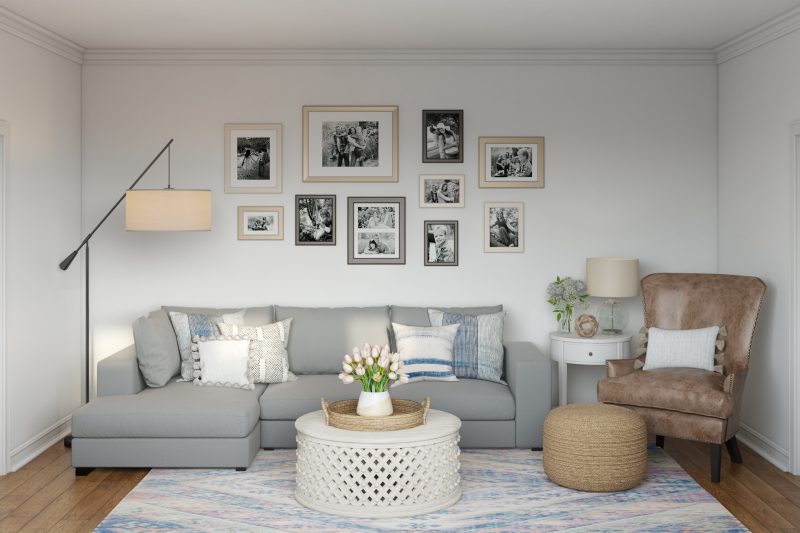
The rule is simple: Any single piece of art or statement mirror should be hung at eye level. Fair enough, but eye levels differ. What if you’re 5’4″ and your husband is 6’2″?
Meet in the middle.
The center of the artwork or mirror should be approximately 60 inches above the floor. At that height, “it’s more natural to notice your art or mirror and be able to view it from anywhere,” Dani says.
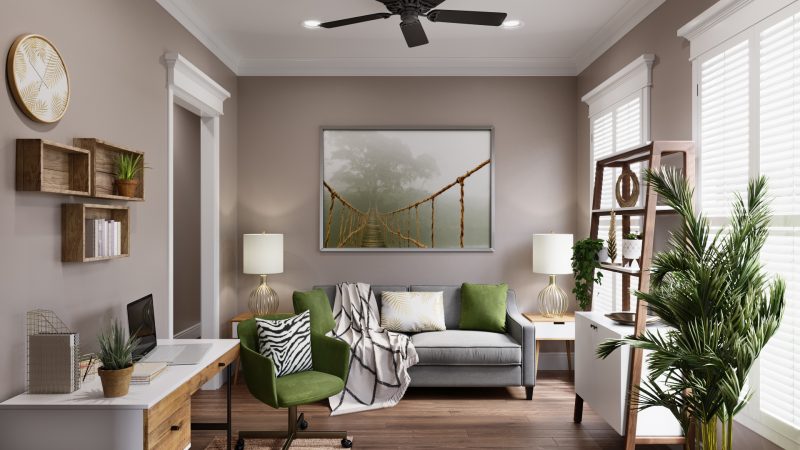
Creating a gallery wall can be a bit more complicated than positioning one piece of art, but the same rule applies. Hang the middle of your collection at an average eye level—or 60 inches above the floor—and expand around that.
Start by placing your artworks on the floor and building around the placement of the largest piece. “That makes it easier to play with the layout before committing to it,” Dani says.
Use an assortment of art sizes and frame styles to give your gallery a dimensional look. A simple statement grid—using frames of identical sizes—is also very eye-catching, Dani adds.
If you’ve got commitment issues when it comes to your walls, opt for a picture ledge. It’s easy to hang (don’t forget to use your level) and allows you to swap out your art and photos in seconds.
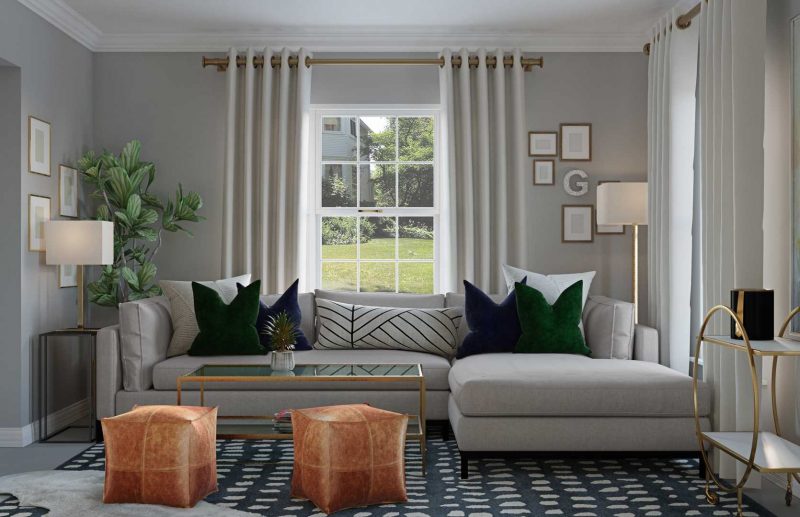
When hanging a TV over a piece of furniture, a good rule of thumb is to hang the bottom of the TV about four to six inches above the top surface.
“Again, it’s all about natural eye levels and sitting positions,” says Dani. “You want to make sure when you’re sitting on the sofa that you aren’t craning your neck up or down to see the TV.”
The same four- to six-inch rule applies when hanging a work of art above a desk, sofa, bed or fireplace mantel.

When hanging a solo plant, opt for a bigger pot “to give it more gravitas,” says Dani, who suggests a brass or metal planter for a modern/luxe feel or a terra cotta pot with ropes for a boho vibe.
“These should be hung low enough so they don’t feel too top-heavy in the space, but also high enough so they make a great natural backdrop.”
When grouping plants, stick to two or three and suspend them at varying heights. “Make sure nothing is on the same plane to keep it visually interesting and dynamic,” Dani says. “Also, don’t be scared to mix draping plants with structured ones to give your grouping even more interest.”
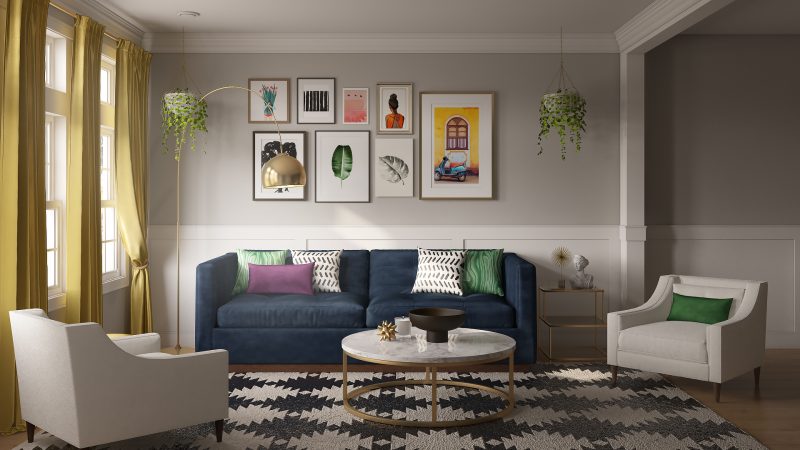
Guidelines for hanging accent lights are determined by room.
In your foyer, the ideal height for an accent light is 7 feet to 9 feet above the floor.
In your living room and bedrooms, overhead statement fixtures should be hung a minimum of 7 feet above the ground. “That makes them easy to walk under without feeling like the ceiling is really low,” Dani says. “Also, there’s no standing up from the sofa or bed and hitting your head on a pendant.”
In your dining room and kitchen, keep accent lights 30 to 34 inches over the table or countertops. “That height allows for the lights to make a statement and be seen at eye level when you’re standing, while also sufficiently lighting any surfaces that are used daily. It also helps with cleaning up any kitchen messes,” Dani says.
Finally, in the bathroom, hang accent lights on the sides of the mirror — roughly 6 inches away — to help frame the mirrors and accent the vanity. An overhead accent light should be at least 6 1/2 feet above the floor.
“Overhead down lighting can be great not only for general lighting of the space but also for reflecting off mirrors below,” Dani says.
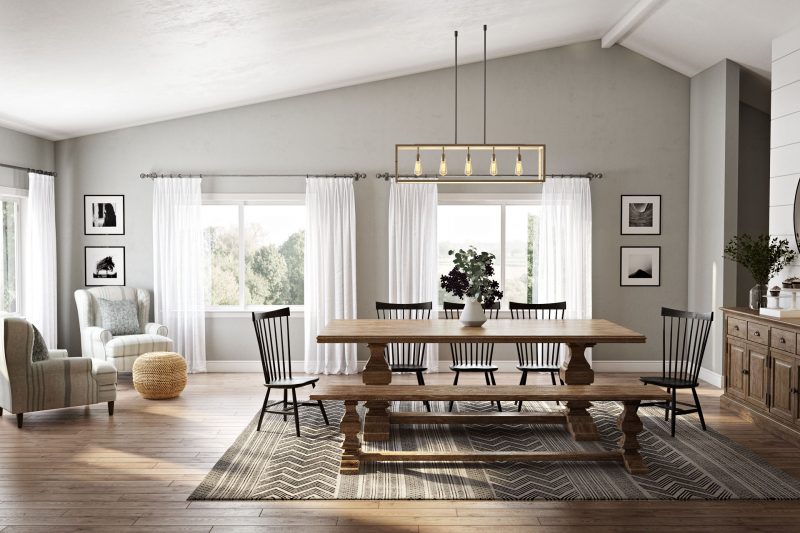
Hang curtains roughly four to six inches below the ceiling.
“This helps draw your eye up and creates the illusion of taller ceilings and larger rooms,” Danis says. “And who doesn’t like that?”
Just make sure you choose curtain panels that are long enough so the hem barely brushes the floor.
For more curtain-hanging tips from our design pros, including hardware and installation tips, head here.
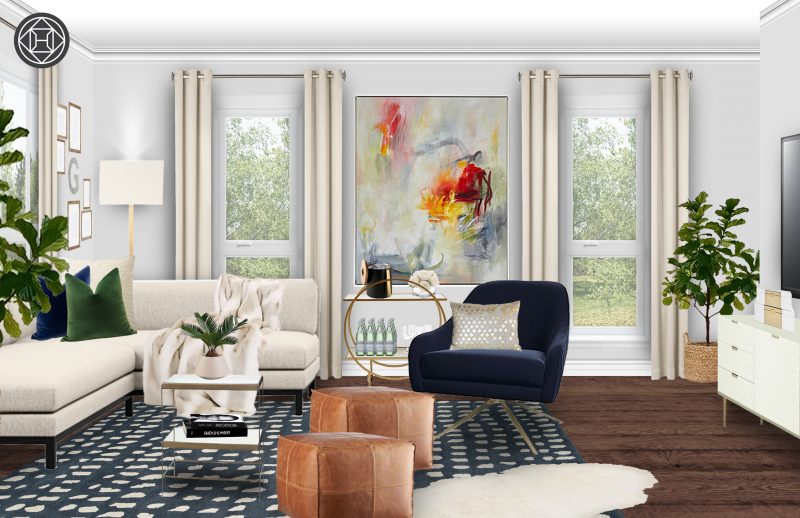
Take Havenly’s style quiz, select the spaces that make your heart race, and we’ll point you toward your perfect interior design style.

